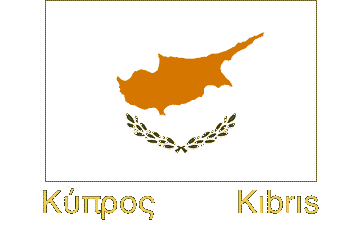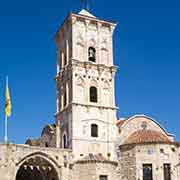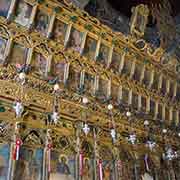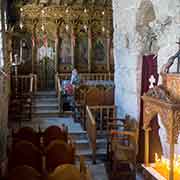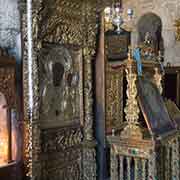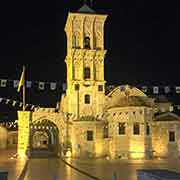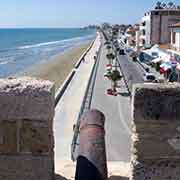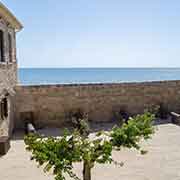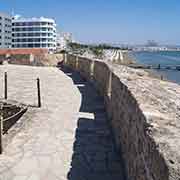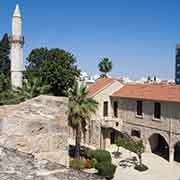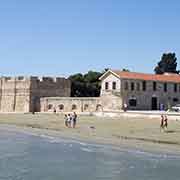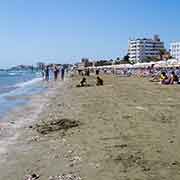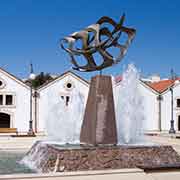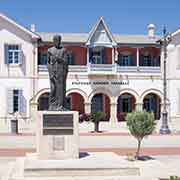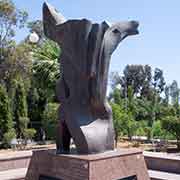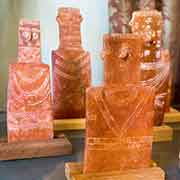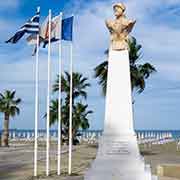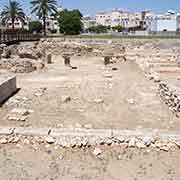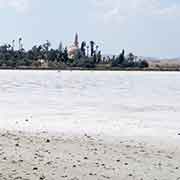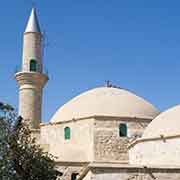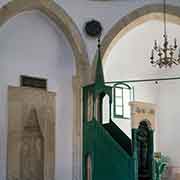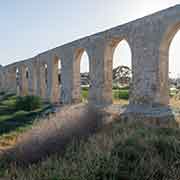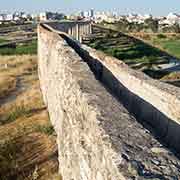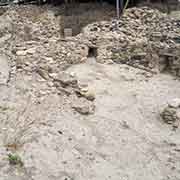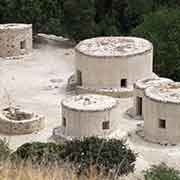Photos of Larnaca, on the south-east coast of Cyprus, Cyprus
Larnaca, on the south-east coast of Cyprus
Larnaca, or, in Greek, Lárnaka (Λάρνακα), on the south-eastern coast of Cyprus, is the third-largest city of the country, with a population of around 145,000. It has an attractive seafront, Foinikoudes, and many historical sights.
you may then send it as a postcard if you wish.
In the north of the modern city is the site of Kition, a city-kingdom established in the 13th century BCE, settled by Achaean Greeks, and rebuilt by Phoenicians around 1000 BCE. The remains of temples, walls and even a naval port can still be seen here. It then was conquered in succession by the Assyrian Empire, Egypt and the Achaemenid (Persian) Empire. Earthquakes destroyed Kition in 322 and 342 CE, and its harbour silted up. The people settled further south, where the city of Larnaca now stands.
The Greek Orthodox Church of Saint Lazarus was built in 890 CE over the tomb of Lazarus, who, as claimed in the New Testament, was raised from the dead by Jesus. According to Orthodox tradition, he came to Cyprus and became the first Bishop of Kition (Larnaca); he was buried here. Although some remains were looted during the Fourth Crusade, it seems there are still some human remains in the tomb. The Byzantines first built the Larnaca castle in the 12th century. The Lusignans then upgraded it to protect what had become one of the main ports of the Kingdom of Cyprus. It was remodelled by the Ottomans around 1605.
The Ottomans had converted churches into mosques and built many more, including the Hala Sultan Tekke or the Mosque of Umm Haram, a Muslim shrine on the west bank of Larnaca Salt Lake, south of the city. They also commissioned the Kamares Aqueduct in 1746 to solve Larnaka’s freshwater problems. It remained in use until the 1950s.
The archeological site of Choirokoitia (Khirokitia), 34 kilometres southwest of Larnaca, dates from the Neolithic age and was occupied from the 7th until the 4th millennium BCE. It is one of the most important and best-preserved prehistoric sites of the eastern Mediterranean. Some of its round, flat-roofed houses have been reconstructed.


